Pemingboks Remington Zig-Zag Derringer (Remington Zig-Zag Derringer)
Like many other major manufacturers weapons, the Remington company sought to meet the growing demand for compact weapons that would be easily hidden in pockets of clothing or luggage. In order to gain a competitive advantage in the arms market, the company launched several multi-charge pistols. One of the first multiply-charged compact pistols is Pemingbox (pepper-box) by Remington Zig-Zag Derringer.
Peppingbox Remington Zig-Zag Derringer (Remington Zig-Zag Derringer) is the first prototype of a revolver, produced by E. Remington and Sons for a cartridge with a metal sleeve of 0.22 caliber (.22 rimfire short).
Remington Zig-Zag Derringer consists of a frame, a block of trunks and a double-action firing mechanism. Zigzag grooves, which are part of the mechanism for turning and cocking the trigger, are applied on the surface of the table unit at the base where the chambers are located. For this reason, the gun and got the name "Zig-Zag".
The block of barrels is fixed on the central axis and consists of six parallel bore channels rotating during firing. The length of the barrel unit 82 mm.
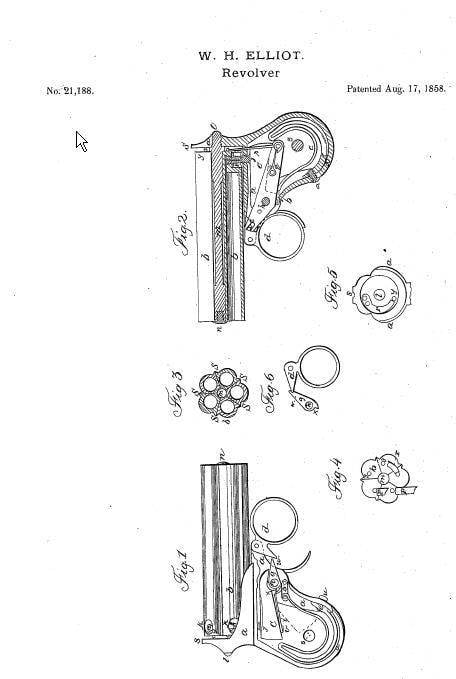
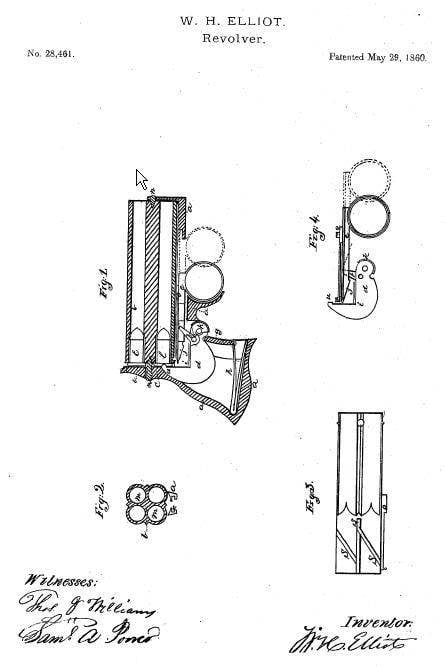
The designer of the Remington Zig-Zag Derringer pistol (Remington Zig-Zag Derringer) is William H. Elliott, who at that time was perhaps the most productive inventor of the company. Elliot's Patents 21188 No. 17 of August 1858 of the Year and 28461 No. of 29 of May 1860 of the Year became the basis for the construction of the Sieg-Zag Derringer peperbox.
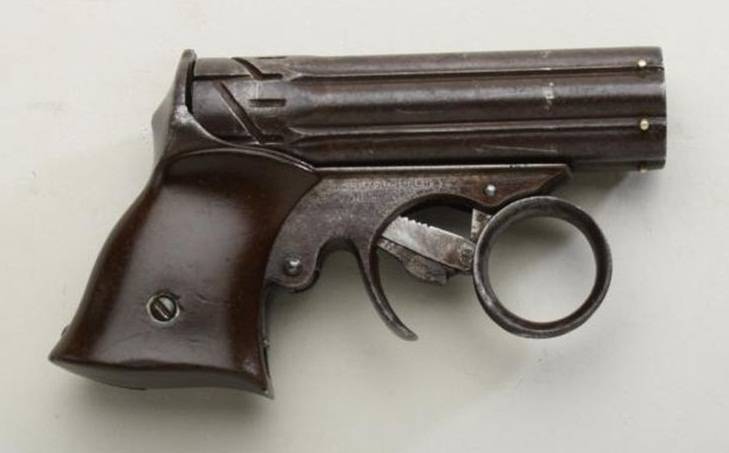
Trigger trigger pistol type. Cocking the internal trigger occurs when you move the descent ring forward and then back.
When the shooter moves the ring, the barrel block rotates due to the interaction of the trigger lever with the zigzag grooves in the rear part of the barrel block.
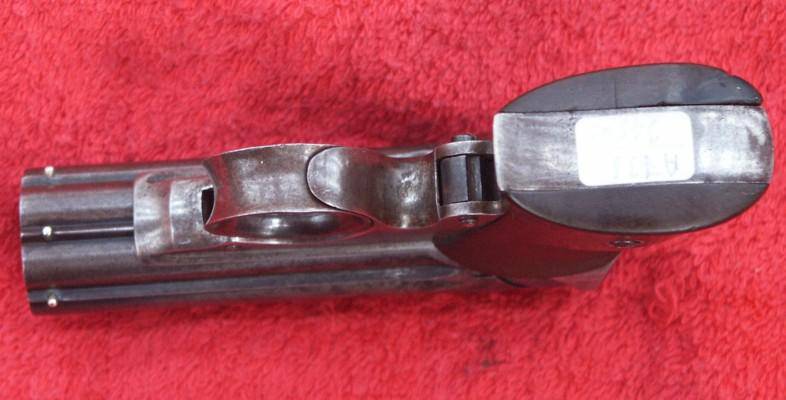
A "C" -shaped frame restricts backward movement of the ring. The lower part of the handle is slightly expanded and has the shape of most American revolvers.
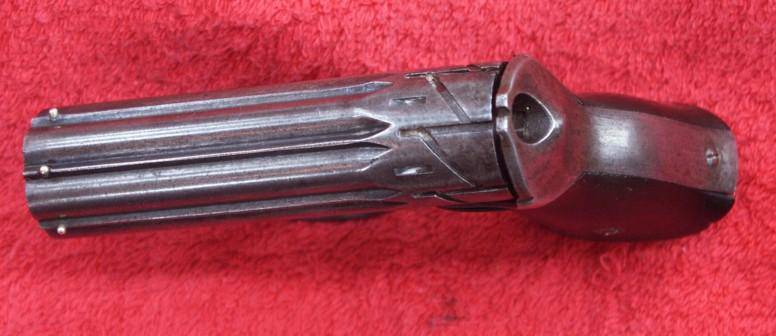
Remington Zig-Zag Derringer sperm peppers are flies that are placed on the ribs between the trunks of the trunks and the rear sight, located in the breech frame.
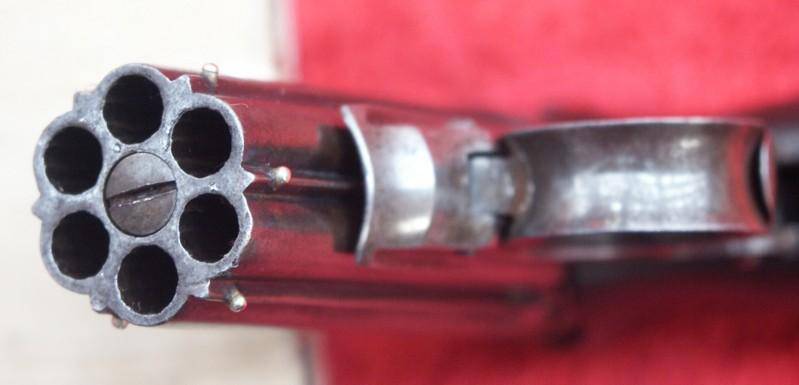
The channels of the barrels of the barrel unit of the PepperBox are rifled, which significantly increases the aimed firing range and the effectiveness of the weapon.
In the back of the gun there is a hole for equipping the chamber with cartridges. Through the same hole, the spent cartridges are removed. A screw for adjusting the force of the mainspring is installed in the lower part of the handle.
On the frame of the gun on the right side is marked, indicating the manufacturer "MANUFACTURED BY REMINGTON, S, ILION.NY"
On the left side of the frame are the patents "ELLIOT 'S PATENTS AUG.17.1858 MAY.29.1860".

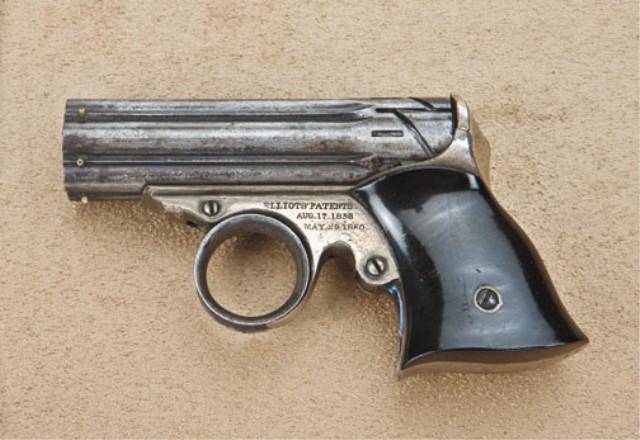
Remington Zig-Zag Derringer was made not only with blued frames, barrels and cheeks of hard rubber grip. The metal parts are chromed or silver plated. The cheeks of the handle were smooth and could have a brown or black color.
Remington Zig-Zag Derringer most valuable pistols were engraved. In such pistols, the cheeks of the handle were made of ivory. A total of approximately 1000 copies of Remington Zig-Zag Derringer PepperBox were produced between 1861 — 1862. For this reason, the collection value of this weapon is quite high. The average price for a Remington Zig-Zag Derringer sometimes exceeds 3500 dollars.
Remington Zig-Zag Derringer could not be called a very successful Elliot pistol, if not for the mass of interesting design solutions, which were successfully embodied in subsequent models of both Remington itself and other weapon companies.
One of the most successful descendants of the Remington Zig-Zag pistol is the Webley-Fosbery revolver.
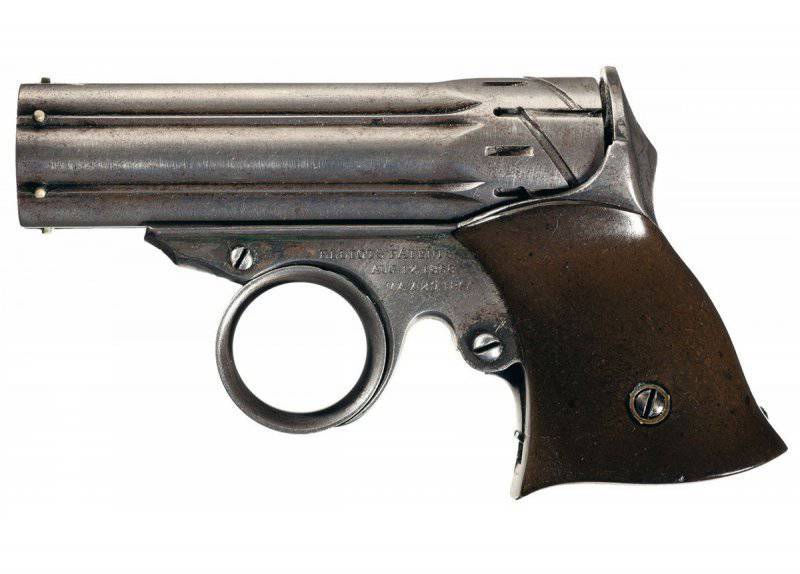
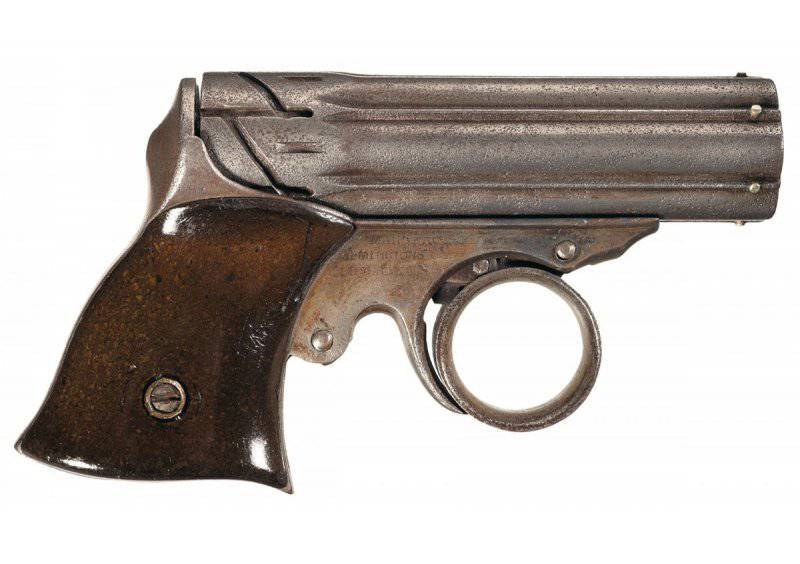
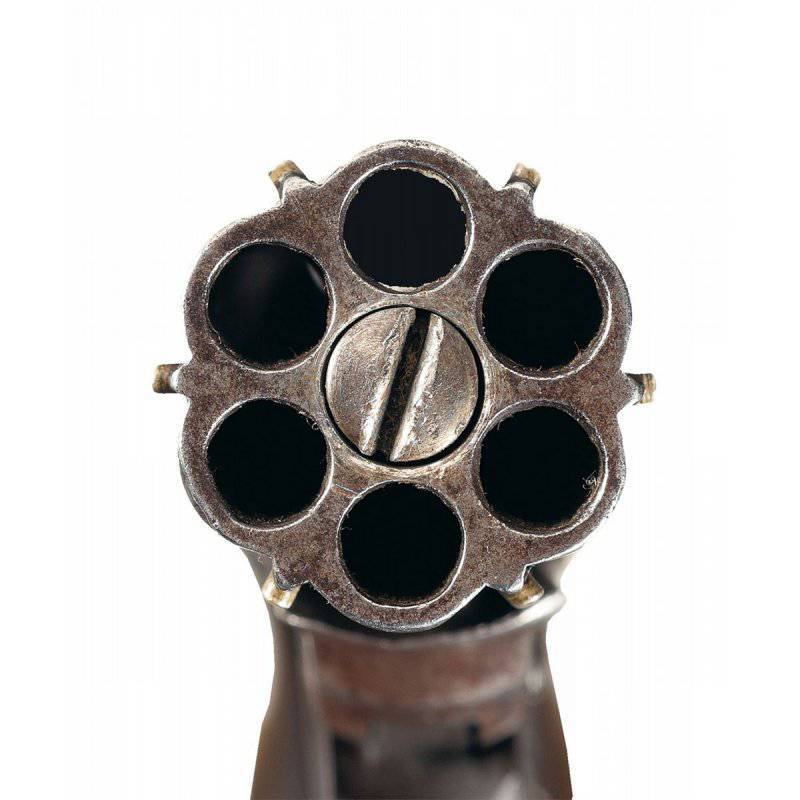
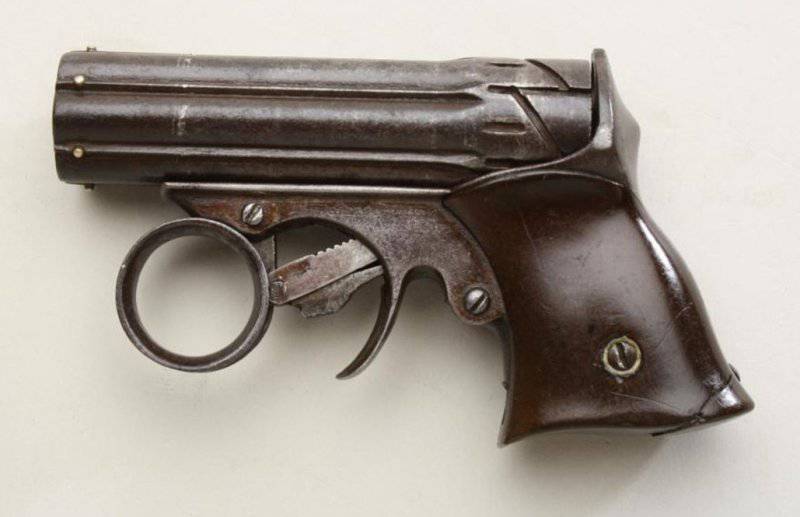
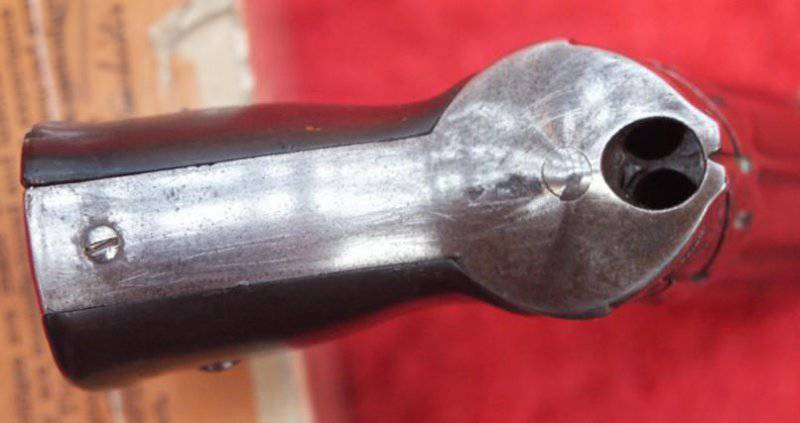
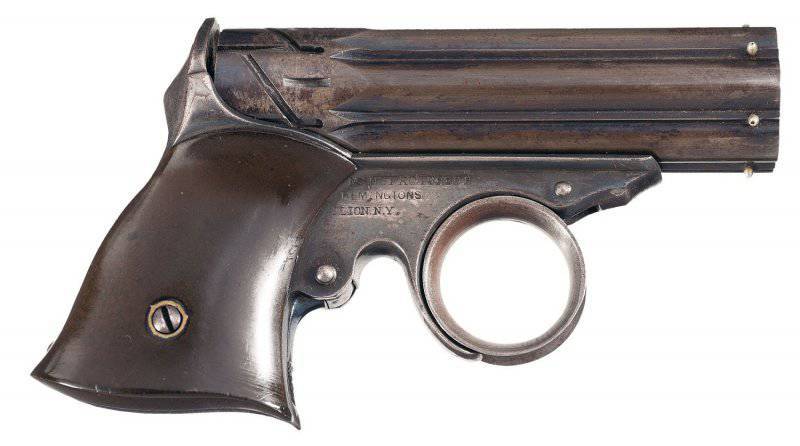
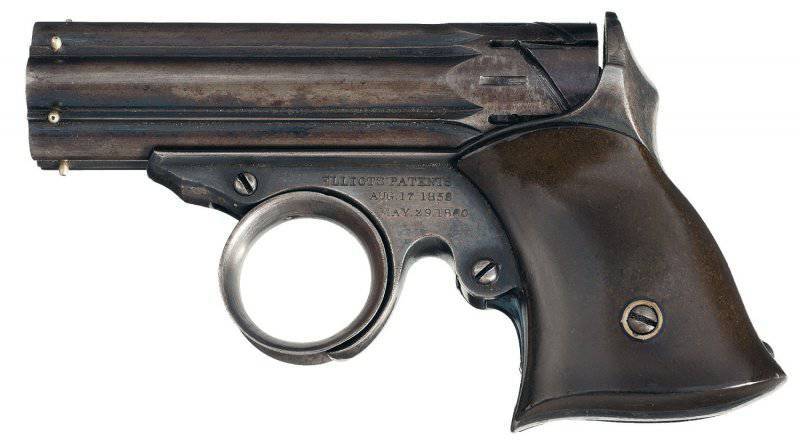
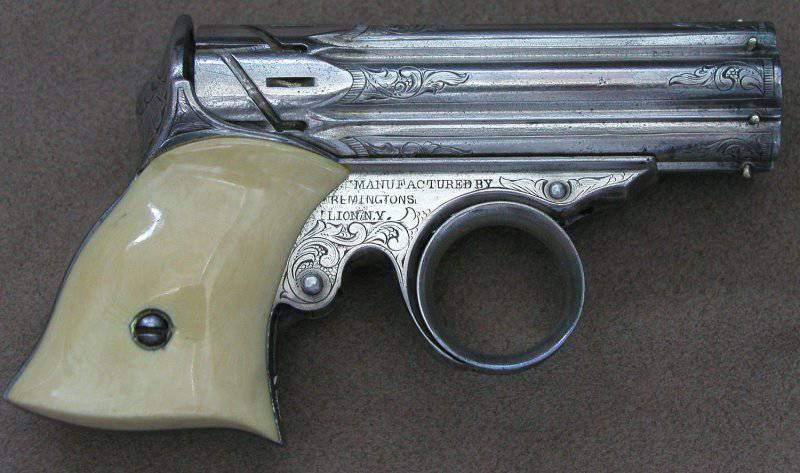
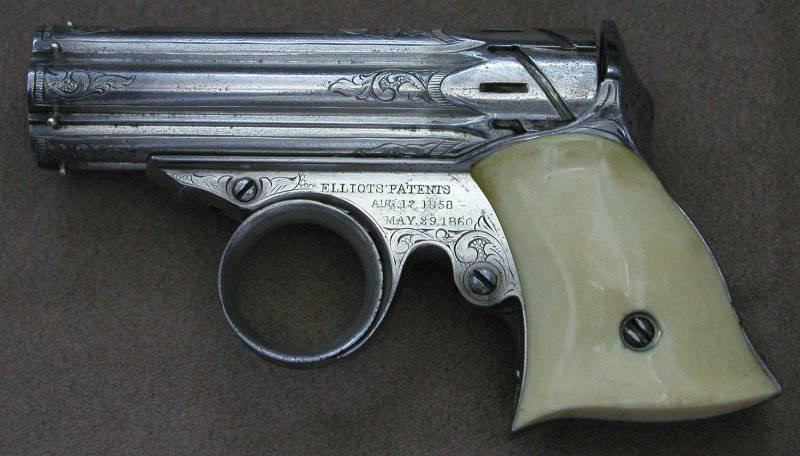
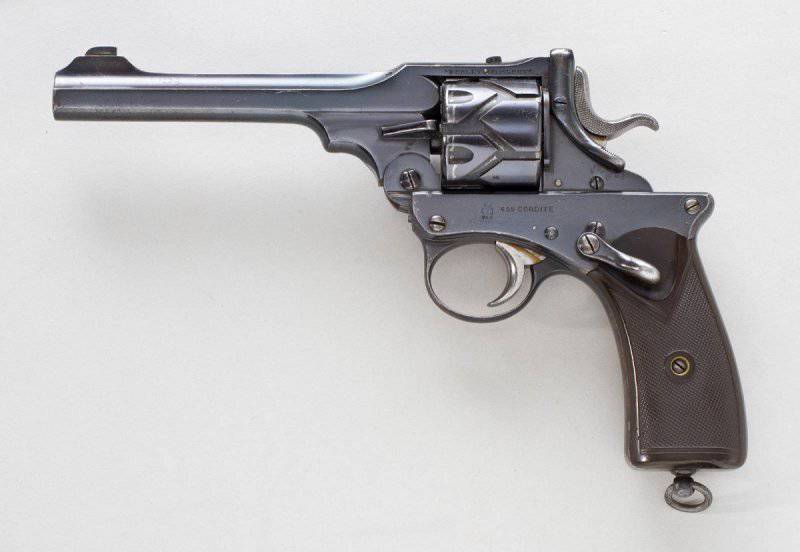
Information